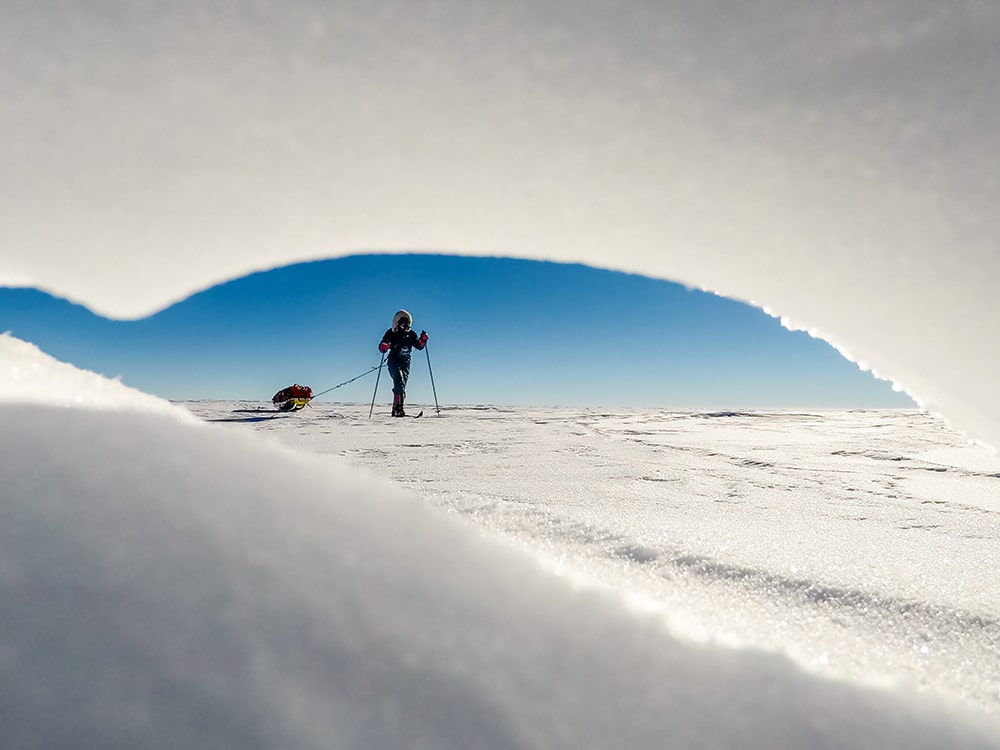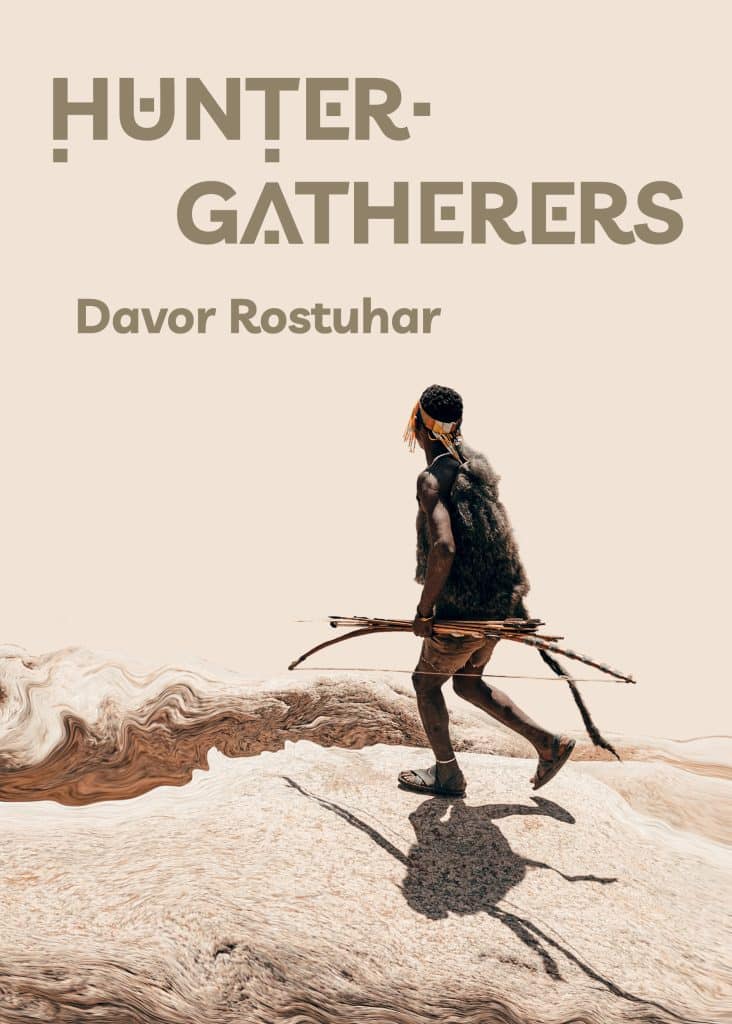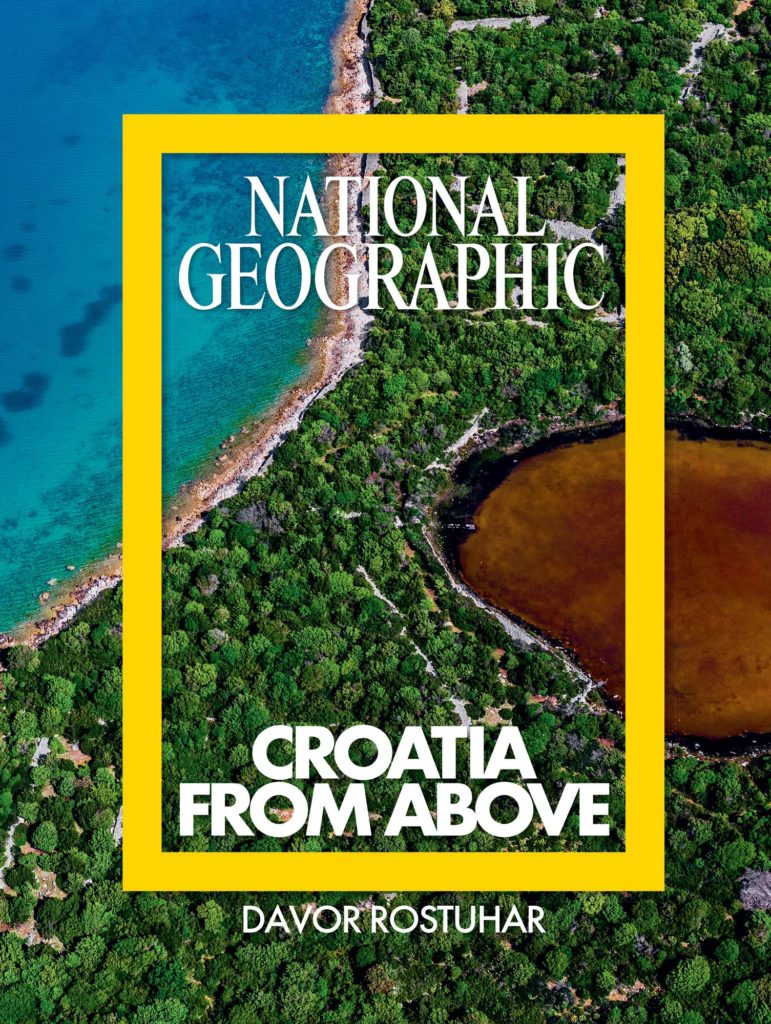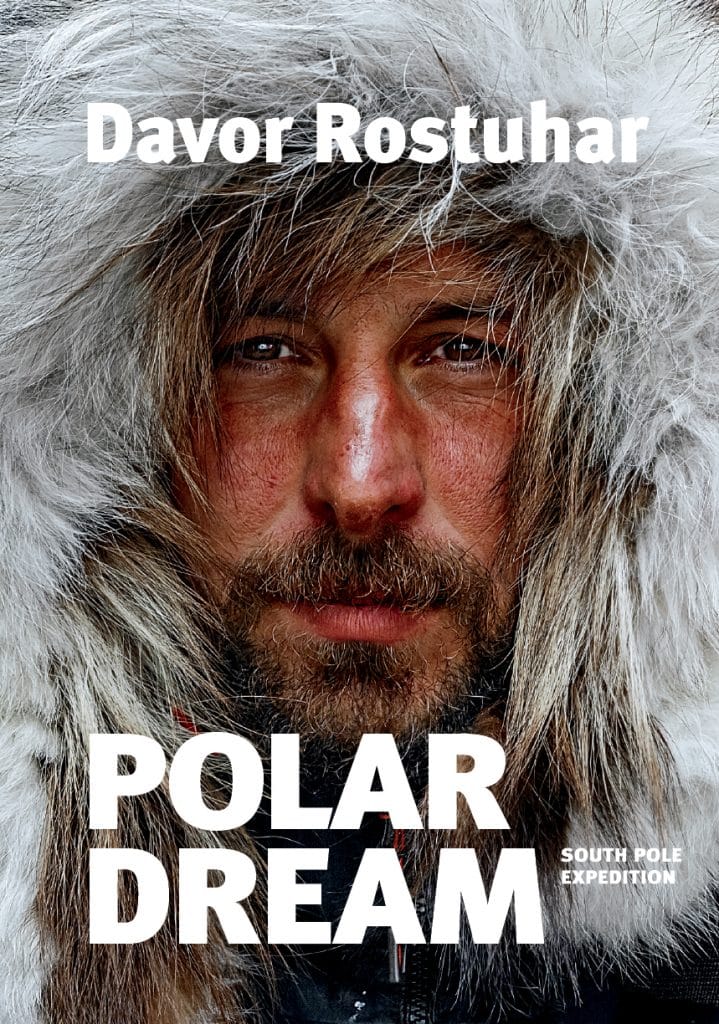Ever since I fell in love with travel, I have dreamed of doing something truly monumental. At least once in my life to undertake some endeavor in the rank of great travelers, adventurers, and explorers whose stories have inspired me to follow my dream. So far, my travels have taken me to the most remote jungles of the world and across the largest deserts, to the most visited destinations in the world as well as to those places where foreigners almost never venture. In 16 years, I have traveled to more than 100 countries. However, Antarctica has remained beyond my wildest fantasies, on top of all travel desires. It is something special, a travel mecca, the last place where the real, classic adventure is still possible.
I dreamed of a great polar expedition, breaking through the great empty whiteness for days, surrounded by an endless horizon and loneliness. I knew that dreams are achievable if we set them wisely and prepare for them well. I knew we couldn’t do everything, but we can do a lot more than we think we can. I knew that no horizon is too far and that life begins once we step out of our comfort zone. I set my goal high above my capabilities and decided to do everything in my power to try to achieve it. And along the way, I wanted to explore on my own example what a man must do to make his dream come true. That is how I decided to go on an expedition to the South Pole.
Antarctica is something special, a travel mecca, the last place where the real, classic adventure is still possible.
MY GOAL – THE SOUTH POLE
In the world of expeditions, three main points attracted the most daring explorers, the so-called three “poles”: Mount Everest, the North Pole, and the South Pole. The greatest Croatian explorer and adventurer of all time, Stipe Božić, was the first Croat on Mt. Everest and the North Pole. He was also preparing for the South Pole, but some of life’s troubles distracted him from that plan, so that dream remained unfulfilled. The expedition to the South Pole remained the last major challenge that the Croats had not yet undertaken. In order for the expedition to be fully recognized in international circles, it is necessary to cross the path from the coast of Antarctica to the South Pole. This can be done in different ways and taking different routes. I opted for the 1,200-kilometer Hercules route, which is not the shortest, but is the safest. I decided to move using only my energy by walking on skis, without harnessing the power of wind, engines, or animals. I decided to pull all the things I needed for that long trip in a sleigh behind me and not use the pre-left food supplies along the way. And I decided to go alone. In this way, alone, without food supplies and without the use of external energy, only 25 people in history have done this before me.
I wondered whether I was normal to spend 50 days in much worse conditions and be the most isolated person on the planet, left only to himself.
When I decided to embark on this endeavor, its might terrified me. I knew I would be exposed to extremely low temperatures, extreme effort, and extreme isolation. I wondered if I was capable of it. I wondered if I was crazy to get into it at all. And I was scared. Fear gripped me, horror pervaded me. When it was -10°C in Zagreb in the middle of winter and the wind was blowing, and I would go out on the balcony of my warm apartment, I would wonder whether I was normal to spend 50 days in much worse conditions and be the most isolated person on the planet, left only to himself. But I believed that it was possible if I managed all the steps of the preparations correctly. The secret of success lies in good preparations.
MULTI-YEAR PREPARATIONS
In order to succeed in such an ambitious endeavor, I had to dedicate three years of my life entirely to preparation. Preparations for such an expedition have four main dimensions. First are the organizational and logistical preparations. I had to study the topic well and get acquainted with everything. Fear most often stems from ignorance. The better we get to know something, the less we are afraid of it. I read books, watched documentaries, traveled to the Arctic, Svalbard, Siberia, and Greenland. I got in touch with people who went through similar expeditions and little by little the idea of going on an Antarctic expedition was getting more familiar to me and thus less scary. I also got in touch with ALE (Antarctic Logistics and Expeditions) which provides logistical support for such expeditions. They can drop me off at the start of the expedition by charter plane and later pick me up at the South Pole and in case of accident or emergency they can come to my rescue. I had to get acquainted with the special equipment and food and prepare well every piece of equipment that I would carry with me. Not only the success of my expedition but also my survival depended on it. At the same time, I was not allowed to carry everything I needed so that my sled would not be too heavy to pull.
The second dimension are physical preparations. I estimated that it would take me about 50 days for this expedition and that I would need about 130 kilograms of equipment during that time and for that journey. To be able to pull a 130-kilogram sled for nearly 1,200 kilometers at all, I had to train well, raise my strength and endurance. I trained six days a week, 2-3 hours a day. My training usually consisted of pulling tires next to the Sava river on Medvednica mountain, long-distance running, hiking, and gym. I went to Norway twice for preparations. Two plateaus in Norway, Hardangervidda and Finnmarksvidda have polar-like conditions. The first time, I went over Hardangervidde accompanied by a guide who taught me cross-country skiing, sled pulling techniques, and surviving in polar conditions. The second time, I walked alone over Finnmarskvidde and in 12 days I covered 300 kilometers, with a sled weighing 80 kilograms.
A big financial challenge
Although the expedition I was preparing for is a great undertaking in a physical sense, an even greater challenge is that of a mental nature. Being alone in such an extreme environment for so long is a great psychological challenge. For many who have gone through a similar experience, it becomes a trauma, but for some it is these extreme conditions that allow them to have an experience that can enrich their lives. In order for my experience to be positive rather than traumatic, I had to go through intense mental training. I first went through a meditation retreat in India, where I learned various meditation and breathing techniques that we can use to control our own emotions, and then I worked with psychologists in Croatia. They taught me how to control fear, worries, doubts and how to not be driven mad by extreme loneliness, but to have a pleasant experience.
The last and probably the most difficult dimension of the preparations was the financial one. The whole project cost about 1.2 million Croatia kunas. My small team from the Club for Expeditionism and Culture and I have been raising funds for a full two years. We negotiated with hundreds of potential sponsors, applied for dozens of tenders, but the results were very poor. We were already a little desperate, because eight months before the expedition we had collected only 20 percent of the required amount. Then we decided on a new and radical move – a crowdfunding campaign. Using an online platform, we presented our intention to people and offered them various benefits in exchange for financial support, such as receiving a postcard from the South Pole, or a book that I will write about my experience with included photographs, or having their name printed on a flag that I will stretch at the South Pole etc. We went to the media, publicly presented our plan and called on people to support us. The campaign succeeded! More than 600 people and companies paid a total of around HRK 250,000.
I went through a meditation retreat in India, where I learned various meditation and breathing techniques that we can use to control our own emotions.
That was still not enough for the entire trip, but the media attention and the success of the campaign attracted some sponsors. Then I decided to walk around Croatia all summer, give lectures, sell my books, and raise funds. At the last minute, we managed to raise enough to cover the minimum costs and pay a huge bill to ALE for transport and logistical support. We hoped to cover the rest of the costs along the way.
Constant temperatures below 0°C
The flight for Union Glacier Base Camp was scheduled for November 26, 2017. I had to place the whole expedition in December and January, during the short Antarctic summer. Antarctica is the coldest, windiest, and driest continent, and actually has only two seasons. A long and unbearably cold winter that lasts from February to November and a short summer that lasts only in December and January. The lowest temperature ever measured on Earth was measured in the interior of Antarctica during the polar winter, -94.7°C. In summer, temperatures are between -10 and -40°C, which is much more bearable, but still very cold.
The difference between the coastal part of Antarctica and its interior is huge. The seas in the Antarctic Circle are extremely rich in plankton, shrimp, and other small creatures that millions of penguins, birds, and seals that live on the continent feed on. Whales from the world’s great oceans also come here to feed. In contrast, there is absolutely nothing alive in the interior of the continent. No lichen, no bacteria, not a single microorganism. Just ice. A huge amount of ice.
It is hard to imagine that Antarctica was once green and lush in life. Today it is the great ice kingdom. The occurrence of this ice also differs inland and on the coast. On the coast everything is much more spectacular, huge glaciers are collapsing into the sea, icebergs are floating by. The sea is frozen at places, at other spots it is not, and is occasionally surrounded by high walls of ice shelves… It all looks much more spectacular than a big ice cap that covers the whole continent and which, when you are on it, looks like a great vast plain. Just before the expedition, I went sailing along the coast of Antarctica to get to know that part of it and learn as much as possible about ice.
These shelves are the biggest in the world. Sometimes they are as big as an entire larger city or smaller country.
I began understanding Antarctica only once I realized that ice flows just like water, but much slower. The snow that falls in Antarctica never melts because the temperature is never above zero, especially in the interior. With each new layer of snow, the lower layers compress and harden and slowly turn to ice. When gravity is added to the game, if ice is on a slope, it flows. If ice forms in the mountains, then it flows through valleys and slopes and thus deepens them. When at the end of its descent it reaches the sea, the edges break and fall into the sea. These are icebergs. In some areas, they do not break immediately, but create shelves or ice barriers in the sea. Ross Ice Shelf, the largest in Antarctica, is larger than France and 800 meters thick. It is held to land only by its edges. Glaciers that descend from the mountains and towards the Ross Ice Shelf, slowly push it further towards the sea, and it, in turn, keeps them from flowing faster. At the opposite end, where the shelf touches the sea, icebergs break off from it as well as from the glaciers that flow straight into the sea and endanger navigation in Antarctic waters. These shelves are the biggest in the world. Sometimes they are as big as an entire larger city or smaller country.
Antarctic ice melting would be a cataclysm
The snow that falls in the interior of Antarctica has nowhere to flow, so it just piles up and up and turns to ice under the pressure of new snow. Although the interior of Antarctica is the largest and driest desert in the world, those few inches of snow that fall each year can neither melt nor flow away. Thus Antarctica is growing in height. In the central part, farthest from the coast, that ice is as thick as 4700 meters! The sheer weight of the ice cap that covers the entire interior of the continent has in some points even pushed the Antarctic mainland below sea level. If all that ice melted, Antarctica would not keep its current shape since most of the continent would be below sea level.
The sea level would rise by about 70 meters and all the coastal cities in the world would be flooded. The catastrophe would be all the greater because the world would lose its largest storehouse of fresh water.
But if that happened, the physical shape of Antarctica would be the least of our problems. We would be much more concerned about the sea level rising by about 70 meters and all the coastal cities in the world flooding. The catastrophe would be all the greater because the world would lose its largest storehouse of fresh water. The ice sheet contains most of the fresh water on Earth, about 80 percent, and 90 percent of all ice. This will not happen soon, but the very fact that we are moving in that direction is alarming. Since the last ice age, which ended 20,000 years ago, our planet has been warming up, and since the Industrial Revolution, that warming has accelerated due to human activity. Melting ice is currently much more alarming in the Arctic because most of the Arctic is ocean, where only sea ice is created, which cannot be thicker than a few meters, so it melts faster. The Greenland ice cap is already melting at high speed. I’m scared to think what it would be like if the Antarctic ice cap started to melt. So far, this is not happening because the temperatures in Antarctica are much lower, but it is getting warmer here every year and it is only a matter of time before this accident begins unfolding.
Following the 80th meridian to the South Pole
My expedition started on December 1, 2017, in the Hercules Bay on the coast of Antarctica. My goal was to follow the 80th meridian to the south, to the point where all the meridians intersect at one point. The path was not completely straight, because I had to avoid the places where the risk of glacial cracks is higher. Falling into a glacial crevasse is the biggest danger of this trip, but ALE staff provided me with accurate information, obtained from satellite measurements, about where the glacier cracks are located, so I was able to bypass them quite successfully. I navigated with the help of a compass, sun, and shadows, and every now and then I would check my location on a GPS device as well. I enjoyed the polar day. The sun just circled around me, never setting below the horizon. Thanks to the sun, the greenhouse effect was created within the tent, so that inside was 30 or 40 degrees warmer than the outside.
The sun just circled around me, never setting below the horizon.
I walked an average of 11 hours a day and during that time traversed between 25 and 33 kilometers, depending on the terrain and the wind. The katabatic wind was constantly blowing in my chest at speeds between 20 and 60 km/h and enhancing the feeling of cold by an additional 10-20 degrees. On the coldest day, the temperature was -27°C, and when the strong wind joined, it felt like -50°C. As I moved inland from the shore, I climbed slowly. I started from sea level and ended up at 2830 meters above sea level. Although the landscape seemed exactly the same, it was actually quite different. Sometimes I enjoyed easy ups and downs, sometimes everything was flat like a board, and sometimes it was uneven like wavy sea. The wind forms sastrugi of snow and ice, these ice ridges sometimes made it very difficult for me to move. Deep snow in some places also made moving and advencing difficult. As I moved inland, there was less moisture in the air, so the snow was drier. As I came to the polar plateau, within 150 kilometers of the South Pole, the snow became so dry that I felt like I was pulling my sled through sand.
From the expedition diary to the book
Despite everything, I managed to stick to the plan and be closer to the Pole day by day. Although one day seemed like another, there was actually a lot going on in those 47 days of the expedition. Every night in my tent I wrote my expedition diary, on the basis of which I later wrote the book. Most of it was happening inside me. Outside of me every day was the same white, icy, inhospitable plain in which there is no living being and through which I have been tracing my trail. I had no one to shift the responsibility to, no one to complain to, and no one to blame for my plight. The only way to survive and succeed was to realize that it all depends on me, on keeping my composure and focus on my goal and good will. Thanks to my perseverance, patience, and care, as well as to hundreds of people who supported this project, after 47 days and 1163 icy kilometers, I managed to get to the South Pole. I prepared so well and planned everything so meticulously that I only had half a kilo of food left. Despite this, I lost 16 kilograms, which best proves what kind of effort I went through.
I proved that great dreams can come true, and I researched the path that leads to them, about which I wrote my seventh book “Polar Dream – The first Croatian expedition to the South Pole.” In the book, I described everything I learned by overcoming numerous challenges, obstacles, and barriers. In 47 days of walking in empty space, through extreme conditions, towards the endless horizon, where the destination point, the southernmost point of our planet and the origin of all meridians finally appeared, I was taught above all that no horizon is too far.
EXPLORE MORE PHOTOGRAPHS FROM ANTARCTICA
ANTARCTIC TREATY
Antarctica is a continent dedicated to science and peace. The territory of Antarctica does not belong to any country, it is the largest “no man’s land” and the largest uninhabited area on the planet. But there is an agreement that regulates what can and what cannot be done. This treaty was drafted in 1959 and by 1961 it was signed by 12 founding countries. Today that club consists of 45 countries. The treaty defines that no country lays claim to any part of Antarctica or its resources. Any military action is prohibited and the continent is open to exploration for all, but only for peaceful purposes. In Antarctica, it is prohibited to establish military bases, dispose of radioactive items, or conduct armed experiments. The only activities allowed are scientific ones.













GOOD
NICE